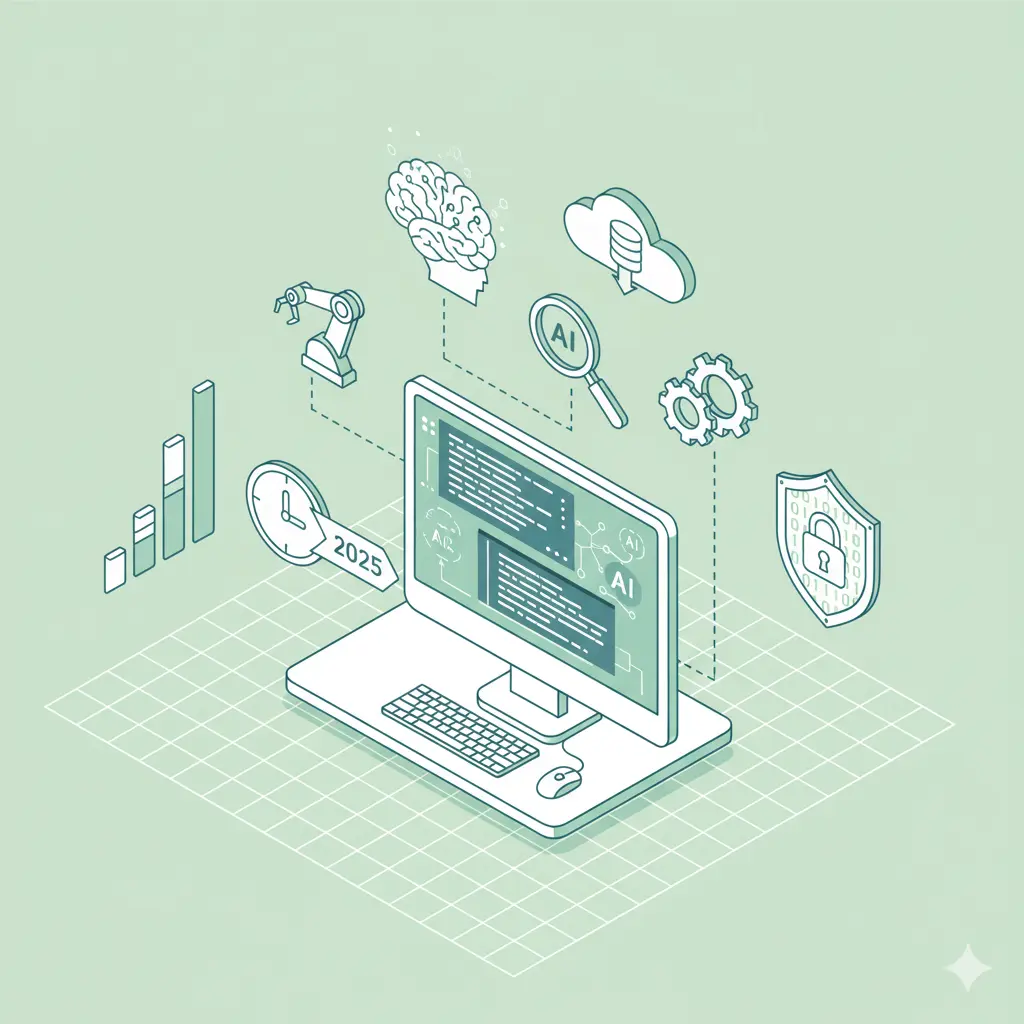The AI Revolution in Enterprise Software: Three Critical Insights from ServiceNow World Forum
The ServiceNow ecosystem faces a paradoxical crisis: explosive growth ($10.98B revenue, 85% Fortune 500 adoption) but organizations can't implement fast enough. Discover how autonomous AI agents are solving three critical challenges from ServiceNow World Forum NYC 2025.

Executive Summary
The ServiceNow ecosystem stands at an inflection point. While the platform experiences explosive growth ($10.98 billion in revenue with 22.45% year-over-year expansion and 85% Fortune 500 adoption), organizations face a paradoxical crisis: they cannot implement the platform capabilities fast enough to meet business demands. This article examines three critical trends emerging from the ServiceNow World Forum and broader industry analysis, revealing how autonomous AI agents are fundamentally transforming enterprise software delivery.
The ServiceNow Growth Paradox
ServiceNow's platform dominance is undeniable. With 8,400+ enterprise customers globally, 98.5% renewal rates, and a 125% net expansion rate, the company represents one of technology's most successful enterprise platforms. Yet beneath these impressive metrics lies a fundamental constraint: the talent and operational capacity to implement ServiceNow cannot keep pace with business demand.
Consider the mathematics of this challenge. Demand for ServiceNow transformation services grew 55% year-over-year while supply increased only 43%, creating a widening gap. The average time to hire a suitable ServiceNow professional now exceeds four months. Meanwhile, 80% of IT resources remain trapped in "Keep The Lights On" activities, leaving teams unable to capitalize on platform innovations arriving with each release cycle.
This analysis examines three interconnected challenges that define the ServiceNow ecosystem in 2025, and explores how autonomous AI agents represent not just an incremental improvement, but a fundamental transformation in how enterprise software gets delivered.
Trend 1: The Talent Crisis Has Reached Critical Mass
The Supply-Demand Imbalance
The ServiceNow talent shortage represents more than a temporary hiring challenge. It reflects a structural market failure. The numbers tell a stark story:
- 81% of hiring managers actively seeking ServiceNow professionals within the next year
- 4 months and 3 weeks average time-to-hire for qualified candidates
- 66% of CIOs report talent as "scarce and almost to crisis proportions"
- $6.5 trillion projected in costs and lost revenue due to skills shortages by 2025
What makes this particularly challenging is the unique skillset required. ServiceNow professionals need technical expertise in development and administration, business acumen in ITSM processes, and continuous learning capacity to absorb platform updates arriving three times annually. Specialized skills in emerging areas (HR Service Delivery, Security Operations, AI integration) command premium compensation while remaining extraordinarily scarce.
The Economics of Scarcity
Scarcity drives predictable economic outcomes. ServiceNow professionals now command:
- $118,000-$180,000 in annual salaries for U.S.-based roles
- $200-$400 per hour for experienced consultants
- 23-29% geographic premiums in markets like San Francisco
Organizations unable or unwilling to meet market rates face rapid turnover, with 19% of professionals receiving retention-driven pay increases amid the talent crunch. Even when companies secure talent, project timelines remain constrained by human capacity limitations. Traditional implementations requiring 12-16 weeks consume senior resources who could otherwise drive strategic initiatives.
The Emergence of Autonomous AI Solutions
This talent crisis has created the conditions for a fundamental shift in delivery models. Autonomous AI agents trained on hundreds of enterprise implementations can provide "effectively unlimited development capacity" without the constraints of human hiring cycles. These agents embody decades of consultant expertise, operating 24/7 to handle complex requirements that typically demand senior professionals. Organizations deploying these solutions report compressing 12-16 week implementations into days.
Trend 2: The Operational Burden Is Crushing Innovation
A troubling pattern emerges: 80% of IT resources and budget typically flow to "Keep The Lights On" activities rather than driving innovation. Research reveals critical thresholds: 20% KTLO enables healthy innovation; 30% creates team stress; 40% drives attrition. At the breaking point, platform teams become "burnout factories."
ServiceNow's latest Zurich release (Q4 2025) introduced over 360 new AI features. Yet most organizations lack capacity to implement them. While 64% of CIOs planned AI investments in 2025, over half of high-maturity IT departments remain in exploratory phases. The platform evolves faster than organizations can adopt it.
Platform owners create roadmaps with clear milestones and prioritized initiatives. Yet operational burden means they consistently miss the mark. Features get de-prioritized. Projects slip to next quarter, then next year. The roadmap becomes a document of good intentions rather than execution—not a failure of planning, but the mathematical reality of having 80% of capacity consumed by maintenance.
Early deployments of autonomous AI agents demonstrate dramatic relief: 80% faster development cycles, months of backlog cleared in days, and 50% reduction in operational burden. Platform teams shift from tactical execution to strategic innovation.
Trend 3: Platform Expansion Outpaces Implementation Capacity
Nearly 100% of organizations plan to onboard at least one new ServiceNow module in the coming year as the platform expands into HR, legal, procurement, security operations, and customer service. Yet traditional implementation creates six-month delays. Organizations capture only 30% of platform value typically, with $43 million lost annually due to poor visibility.
Consider a common scenario: migrating 200 service catalog items requires 6 months with 4 full-time developers using traditional approaches. This timeline reflects the reality of human-dependent delivery—requirements clarification, development scheduling, and stakeholder coordination compound delays.
Autonomous AI agents collapse these timelines. The same six-month migration completes in six weeks. This acceleration stems from intelligent requirements gathering, context-aware development, automated testing, and elastic scaling. Perhaps most significantly, AI agents compound knowledge across hundreds of projects simultaneously—each pattern learned becomes available to every subsequent project, representing non-linear knowledge scaling impossible with human consulting models.
Conclusion: Speed Becomes Strategy
These three trends converge to create a strategic imperative. Organizations that solve the talent constraint, escape the operational burden, and accelerate implementation timelines gain decisive competitive advantages. They can experiment rapidly, respond to business changes in days rather than quarters, capture full platform value, and maintain continuous upgrades.
An organization that compresses development cycles by 80%, reduces operational burden by 50%, and eliminates six-month implementation delays doesn't just improve efficiency—it transforms its relationship with technology from constraint to enabler.
The ServiceNow ecosystem faces a decisive moment. Talent scarcity worsens as demand outpaces supply by 12 percentage points annually. Operational burdens trap 80% of resources in maintenance. Implementation timelines prevent organizations from capturing platform value. These challenges require a fundamental transformation in how ServiceNow work gets done.
In an ecosystem where ServiceNow capabilities expand faster than traditional delivery models can implement them, speed becomes strategy.
Download the Full Industry Report
This article provides an overview. Our comprehensive 11-page whitepaper includes:
- Detailed statistics from 15+ authoritative sources
- Complete case studies with real-world ROI
- Technical deep-dive on autonomous AI agents
- Strategic implementation framework
- Salary trends and workforce planning insights



